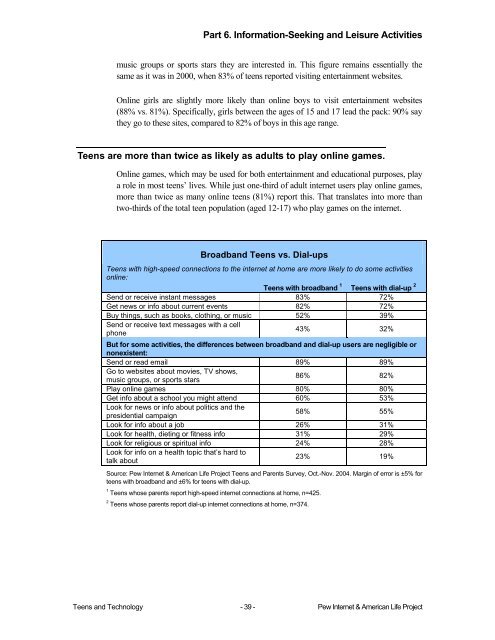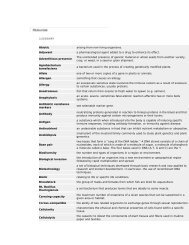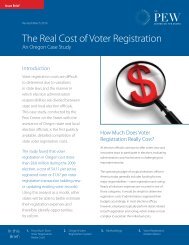Teens and Technology - Pew Internet & American Life Project
Teens and Technology - Pew Internet & American Life Project
Teens and Technology - Pew Internet & American Life Project
You also want an ePaper? Increase the reach of your titles
YUMPU automatically turns print PDFs into web optimized ePapers that Google loves.
Part 6. Information-Seeking <strong>and</strong> Leisure Activities<br />
music groups or sports stars they are interested in. This figure remains essentially the<br />
same as it was in 2000, when 83% of teens reported visiting entertainment websites.<br />
Online girls are slightly more likely than online boys to visit entertainment websites<br />
(88% vs. 81%). Specifically, girls between the ages of 15 <strong>and</strong> 17 lead the pack: 90% say<br />
they go to these sites, compared to 82% of boys in this age range.<br />
<strong>Teens</strong> are more than twice as likely as adults to play online games.<br />
Online games, which may be used for both entertainment <strong>and</strong> educational purposes, play<br />
a role in most teens’ lives. While just one-third of adult internet users play online games,<br />
more than twice as many online teens (81%) report this. That translates into more than<br />
two-thirds of the total teen population (aged 12-17) who play games on the internet.<br />
Broadb<strong>and</strong> <strong>Teens</strong> vs. Dial-ups<br />
<strong>Teens</strong> with high-speed connections to the internet at home are more likely to do some activities<br />
online:<br />
<strong>Teens</strong> with broadb<strong>and</strong> 1 <strong>Teens</strong> with dial-up 2<br />
Send or receive instant messages 83% 72%<br />
Get news or info about current events 82% 72%<br />
Buy things, such as books, clothing, or music 52% 39%<br />
Send or receive text messages with a cell<br />
phone<br />
43% 32%<br />
But for some activities, the differences between broadb<strong>and</strong> <strong>and</strong> dial-up users are negligible or<br />
nonexistent:<br />
Send or read email 89% 89%<br />
Go to websites about movies, TV shows,<br />
music groups, or sports stars<br />
86% 82%<br />
Play online games 80% 80%<br />
Get info about a school you might attend 60% 53%<br />
Look for news or info about politics <strong>and</strong> the<br />
presidential campaign<br />
58% 55%<br />
Look for info about a job 26% 31%<br />
Look for health, dieting or fitness info 31% 29%<br />
Look for religious or spiritual info 24% 28%<br />
Look for info on a health topic that’s hard to<br />
talk about<br />
23% 19%<br />
Source: <strong>Pew</strong> <strong>Internet</strong> & <strong>American</strong> <strong>Life</strong> <strong>Project</strong> <strong>Teens</strong> <strong>and</strong> Parents Survey, Oct.-Nov. 2004. Margin of error is ±5% for<br />
teens with broadb<strong>and</strong> <strong>and</strong> ±6% for teens with dial-up.<br />
1<br />
<strong>Teens</strong> whose parents report high-speed internet connections at home, n=425.<br />
2<br />
<strong>Teens</strong> whose parents report dial-up internet connections at home, n=374.<br />
<strong>Teens</strong> <strong>and</strong> <strong>Technology</strong> - 39 - <strong>Pew</strong> <strong>Internet</strong> & <strong>American</strong> <strong>Life</strong> <strong>Project</strong>
















